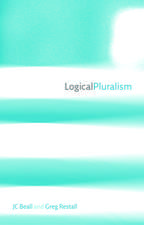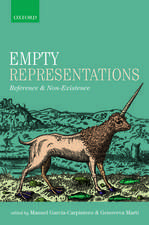Developing Sanity in Human Affairs: Contributions to the Study of Mass Media and Communications
Autor Robert P. Holston, Susan Kodishen Limba Engleză Hardback – 29 dec 1998 – vârsta până la 17 ani
Din seria Contributions to the Study of Mass Media and Communications
- 27%
 Preț: 439.09 lei
Preț: 439.09 lei - 35%
 Preț: 413.28 lei
Preț: 413.28 lei - 38%
 Preț: 343.98 lei
Preț: 343.98 lei - 27%
 Preț: 345.15 lei
Preț: 345.15 lei - 27%
 Preț: 438.67 lei
Preț: 438.67 lei - 28%
 Preț: 461.28 lei
Preț: 461.28 lei - 24%
 Preț: 464.40 lei
Preț: 464.40 lei - 28%
 Preț: 437.84 lei
Preț: 437.84 lei - 38%
 Preț: 438.67 lei
Preț: 438.67 lei - 27%
 Preț: 438.93 lei
Preț: 438.93 lei - 24%
 Preț: 462.20 lei
Preț: 462.20 lei - 24%
 Preț: 460.25 lei
Preț: 460.25 lei - 27%
 Preț: 345.15 lei
Preț: 345.15 lei - 28%
 Preț: 435.80 lei
Preț: 435.80 lei - 38%
 Preț: 437.40 lei
Preț: 437.40 lei - 27%
 Preț: 345.67 lei
Preț: 345.67 lei - 38%
 Preț: 344.63 lei
Preț: 344.63 lei - 38%
 Preț: 438.51 lei
Preț: 438.51 lei - 38%
 Preț: 346.42 lei
Preț: 346.42 lei - 28%
 Preț: 462.70 lei
Preț: 462.70 lei - 28%
 Preț: 460.93 lei
Preț: 460.93 lei - 38%
 Preț: 442.40 lei
Preț: 442.40 lei - 27%
 Preț: 638.30 lei
Preț: 638.30 lei - 38%
 Preț: 438.00 lei
Preț: 438.00 lei - 38%
 Preț: 436.73 lei
Preț: 436.73 lei - 19%
 Preț: 459.24 lei
Preț: 459.24 lei - 28%
 Preț: 437.91 lei
Preț: 437.91 lei - 24%
 Preț: 460.16 lei
Preț: 460.16 lei - 24%
 Preț: 461.35 lei
Preț: 461.35 lei - 27%
 Preț: 441.13 lei
Preț: 441.13 lei - 38%
 Preț: 437.24 lei
Preț: 437.24 lei - 38%
 Preț: 437.57 lei
Preț: 437.57 lei - 28%
 Preț: 438.17 lei
Preț: 438.17 lei - 27%
 Preț: 439.44 lei
Preț: 439.44 lei - 28%
 Preț: 436.73 lei
Preț: 436.73 lei - 24%
 Preț: 363.73 lei
Preț: 363.73 lei - 24%
 Preț: 459.56 lei
Preț: 459.56 lei - 27%
 Preț: 345.30 lei
Preț: 345.30 lei - 38%
 Preț: 437.57 lei
Preț: 437.57 lei - 24%
 Preț: 364.90 lei
Preț: 364.90 lei - 33%
 Preț: 320.01 lei
Preț: 320.01 lei - 27%
 Preț: 346.25 lei
Preț: 346.25 lei - 38%
 Preț: 437.47 lei
Preț: 437.47 lei - 38%
 Preț: 436.99 lei
Preț: 436.99 lei - 38%
 Preț: 345.74 lei
Preț: 345.74 lei - 27%
 Preț: 439.09 lei
Preț: 439.09 lei - 15%
 Preț: 441.90 lei
Preț: 441.90 lei - 11%
 Preț: 460.76 lei
Preț: 460.76 lei
Preț: 443.66 lei
Preț vechi: 607.54 lei
-27% Nou
Puncte Express: 665
Preț estimativ în valută:
84.91€ • 88.31$ • 70.09£
84.91€ • 88.31$ • 70.09£
Carte tipărită la comandă
Livrare economică 15-29 aprilie
Preluare comenzi: 021 569.72.76
Specificații
ISBN-13: 9780313306136
ISBN-10: 0313306133
Pagini: 456
Dimensiuni: 156 x 235 x 29 mm
Greutate: 0.84 kg
Editura: Bloomsbury Publishing
Colecția Praeger
Seria Contributions to the Study of Mass Media and Communications
Locul publicării:New York, United States
ISBN-10: 0313306133
Pagini: 456
Dimensiuni: 156 x 235 x 29 mm
Greutate: 0.84 kg
Editura: Bloomsbury Publishing
Colecția Praeger
Seria Contributions to the Study of Mass Media and Communications
Locul publicării:New York, United States
Notă biografică
SUSAN PRESBY KODISH, a psychologist in private practice in Baltimore, serves as Education Director of the Institute of General Semantics and Senior Editor of the General Semantics Bulletin.ROBERT P. HOLSTON is Distinguished Professor of General Semantics and Director of the Hofstra Center for General Semantics and Critical Thinking.
Cuprins
Introduction by Susan Presby KodishAlfred Korzybski Memorial LectureOverview by Susan Presby KodishGeneral Semantics: The Next Generation by Nicholas JohnsonCritical ThinkingOverview by Rachel LauerThinking Critically about Sources of Information by Robert J. SwartzIntegrating Critical Thinking and General Semantics: An Interactive PanelFoundationsOverview by Stuart A. MayperLiving in an "as if" World: Some Reflections on "The Map Is Not the Territory" by Charlotte Schuchardt ReadThe Most "Consequential" Elementalism by Edward MacNealGeneral Semantics and Fuzzy Logic/Sets: Similarities and Differences by Robert P. PulaHow General Semantics Can Rescue Biology from Itself: A Biology with Biologists in It by C. Andrew HilgartnerGeneral-Semantics: A Critical and Meta-Critical System by Milton DawesUndecidability in Quantum Physics, Chaos Theory, and Deconstruction: Implications for Politics, Ethics, and Society by Roben TorosyanEEOS: A Fourth Non-Aristotelian Model by D. David Bourland, Jr.Social/Cultural IssuesOverview by Milton DawesA General Semantics Approach to Appreciating Cultural Diversity by Gregg HoffmannA North-South Bridge of General Semantics: The Cross-Cultural Approach in an International and a National Environment by Laura BertoneHow General Semantics Contributes to the Understanding of Violence by Rachel LauerBreaking the Taboo: A Critical Look at Barriers to Thought and Discussion of Assisted Suicide for the Terminally Ill by Lee MazmanianHealing Medicine with Language by Joseph F. FennellyThe Importance of Story-Telling to Time-Binding: Crucial Issues for General Semantics to Address by Martha A. Bartter, C. Andrew Hilgartner, and Martin L. StonemanProblem Solving with General Semantics by David HewsonEducation/CounselingOverview by Martin H. LevinsonA General Semantics Approach to Clinical Supervision with Drug Prevention Counselors by Martin H. LevinsonThe Irving J. Lee Method of Teaching General Semantics by Sanford I. Berman"Got-to-Be, Got-to-Be, Dom-in-o's!": The Semantics of Student Responses to TV Commercials by Roy F. FoxAn Integrated Model of Alfred Korzybski's General Semantics, Bandler/Grinder's Neuro-Linguistic Programming, Ellis's Rational Emotive Behavior Therapy, and Glasser's Reality Therapy/Control Theory by Michael HallProfessor A and Professor B: Illustrating Concepts in the General Semantics Course by Charles B. DodsonDream Education and General Semantics by Allen FlaggGeneral Semantics and Zen: Complementary Guides for Sane Living by S. W. HolmesCommunicationOverview by Gregg HoffmannUsing General Semantics as the Theoretical Foundation for Teaching Media Literacy by Terese Brecklin and Gregg HoffmannCaveat Lector: "Let the Reader Beware" A General Semantic View of the Potential for Misevaluation in Medical Research Communication by Norman S. BlackmanGeneral Semantics and Translation Theory by Alexandra Chciuk-CeltDo You See What I See? by David Scott GoenGeneral Semantics and the Ethics Agenda: New Challenges for the News Media by Jay BlackLabor and Contentionally Related Lexical Items in Communist Newspeak: Cases of Soviet Russia and Socialist Germany by Galik I. Artemchuk and George G. PocheptsovHumanism/EthicsOverview by Susan Presby KodishPutting Up Lightning Rods: General-Semantics and Secular Humanism by Susan Presby Kodish and Bruce I. KodishGeneral Semantics and Secular Humanism by Timothy J. MadiganThe Ethics of Secular Humanism by Stuart D. JordonEvaluating Abortion: A General-Semantics Analysis by Bruce I. KodishCan We Develop a Worldwide Extensional Ethic? by Kenneth L. BaldwinIndex




















